Last Chance to Catch NYC's Holiday Notalgia Train
We met the voices of the NYC subway on our nostalgia ride this weekend!


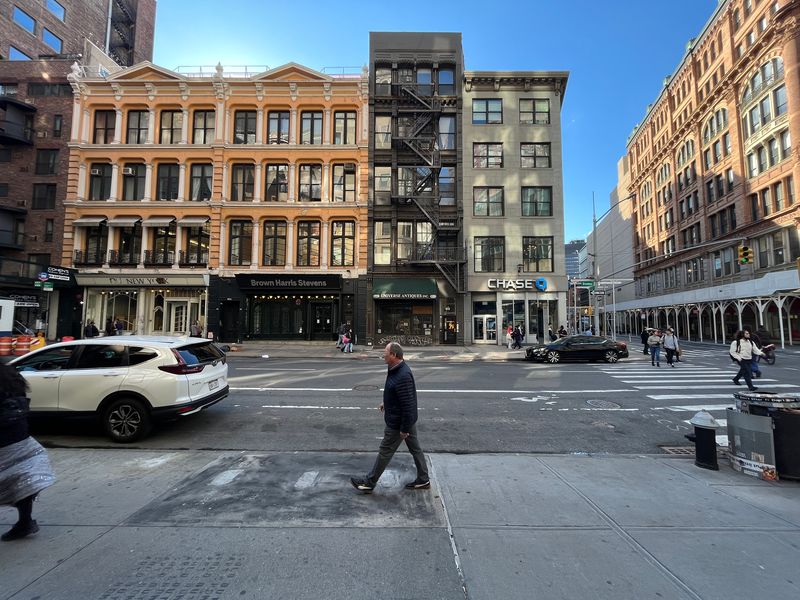
When you think of cast iron architecture and New York City, it’s usually the streets of SoHo that come to mind, But just north of the SoHo historic district, at the intersection of Greenwich Village and the East Village, preservationists are trying to save more of New York City’s cast iron architecture, as well as pieces of its vibrant cultural history. This transitional space south of Union Square is the focus of a Village Preservation campaign that is fighting for landmark designation and zoning protections that will shield the neighborhood’s historic structures from an anticipated onslaught of development as “Silicon Alley,” New York City’s burgeoning tech hub, continues to expand. Within this district, roughly bounded by Third to Fifth Avenues and 14th to 9th Streets, there are buildings that once served as the residences of famous artists, buildings that hold the legacy of important activist movements, buildings that illustrate New York City’s evolving commercial industry and so much more. We’ve rounded up some of the most stunning examples of cast iron architecture in the proposed south of Union Square historic district that preservationists are fighting to save.
On January 18th, join Village Preservation Executive Director Andrew Berman for a fascinating virtual tour of the hidden history south of Union Square. In this live virtual talk, which is free for Untapped New York Insiders, you’ll discover how the neighborhood played a defining role in the launch of the modern African American and LGBTQ+ civil rights movements, the Women’s suffrage movement, anti-fascist organizing and labor and leftist movements. You’ll also uncover the homes of the greatest artists of the mid-20th century, see examples of America’s greatest architects, such as James Renwick Jr., and learn about how this area was the center of commerce and culture.
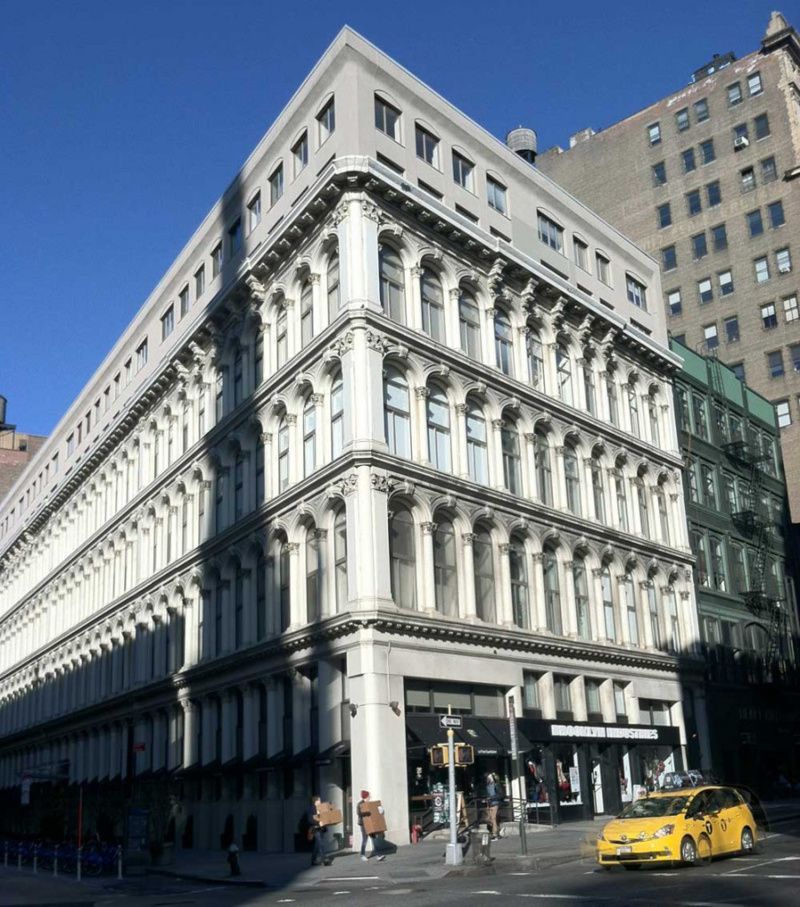
The first spot on our list has to go to 801-807 Broadway, known as “The Cast Iron Building.” John Kellum, the architect known for his work on the A.T. Stewart Department Store, designed for Scottish textile merchant James McCreery. In 1869, the James McCreery & Co. Dry Goods emporium opened inside. The store operated until 1902.
The cast iron for the building came from the foundry of J. B. & W. W. Cornell Ironworks. The company also produced manhole and coal hole covers, which you can still spot around New York City. The Cornell Company still exists today as a rolling door manufacturer. In 1971, a fire destroyed the interior of the building, but the sturdy cast-iron facade was saved. The original mansard roof was replaced and the building was converted into apartments.
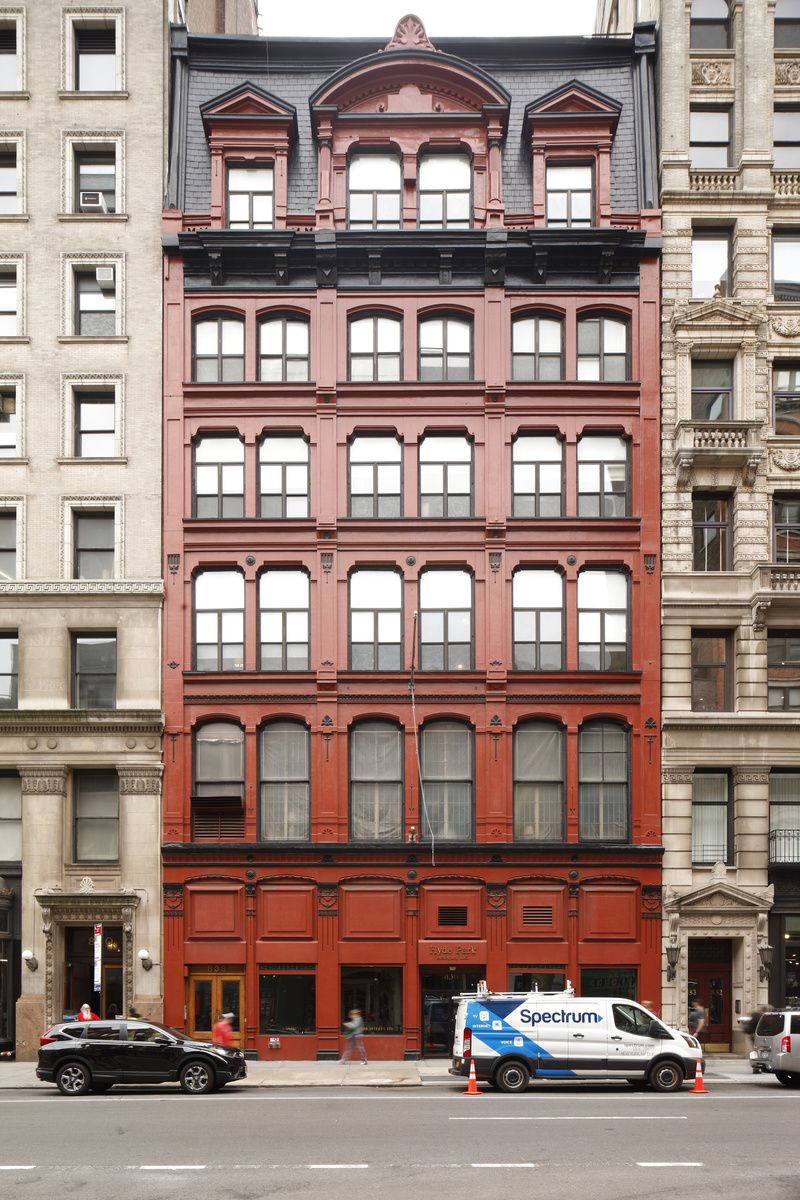
836 Broadway is the oldest of the seven individual landmarks of south Union Square that were designated in 2019. The building, designed by architect Stephen Decatur Hatch, stands at the former site of a townhome owned by J. and Cornelia Roosevelt, the great-uncle and great-aunt of President Theodore Roosevelt, Jr. Occupying an irregular L-shaped lot, the building has two cast iron facades, one on Broadway and the other on East 13th Street.
The Broadway facade is painted red with black accents, while the 13th Street facade is all white. Both sides of the building also feature a slate-shingled mansard roof, but again, the one on the Broadway side is much more fanciful. The building’s first tenant was the manufacturing company Mitchell, Vance & Co. They made light fixtures, clocks, and ornamental metal. Its current ground-floor tenant is Hyde Park Antiques.
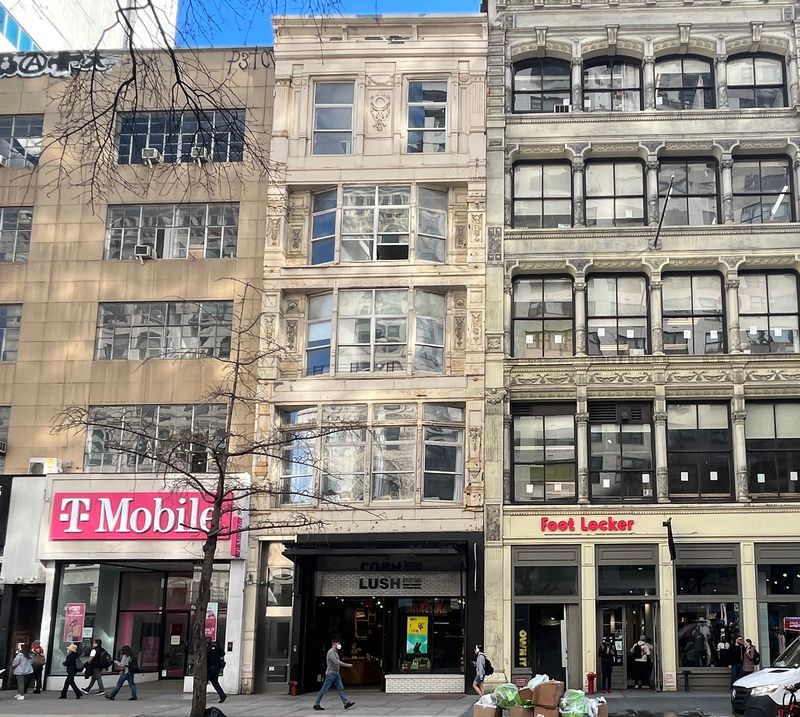
Known as the Joseph J. Little Building, this slim cast iron structure designed by William Wheeler Smith was constructed in 1881. The building is exemplary of many innovative techniques that Smith employed in his designs such as the cast iron construction and the bay windows that are angled in and flush with the building line.
The large, north-facing bay windows overlook Union Square and let in tons of sunlight. The windows made the building appealing to artists like William Michael Harnett, painter of photorealistic After the Hunt (1885), who lived there from 1886-1889. The building also has ties to the piano manufacturing industry and the Communist Party!
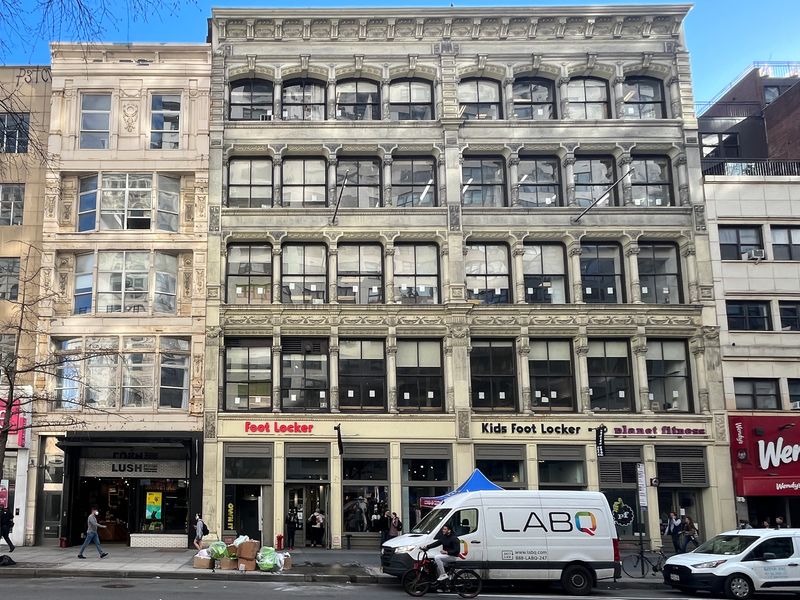
Right next door to the Joseph J. Little Building is another cast-iron structure built for James McCreery. Completed in 1881, a couple of decades after his large dry goods store on Broadway, this structure was designed by the firm of brothers David & John Jardine. D & J Jardine was a prolific 19th-century firm. Today, their buildings are protected in five different historic districts, but this one on East 14th Street is their only individual landmark. The cast iron was manufactured by West Side Architectural Iron Works.
This building originally housed The Baumann Brothers Furniture and Carpets Store which claimed to be “the largest and most complete furnishing establishment in America.” It was in a prime location amidst Manhattan’s booming commercial district that centered around Union Square and The Ladies’ Mile. An amalgamation of Neoclassical, neo-Grec, and Queen Anne style elements give this cast-iron building a distinctive aesthetic character. The New York City Landmarks Commission called the facade, “one of the city’s most inventive, unusual, and ornamental.”
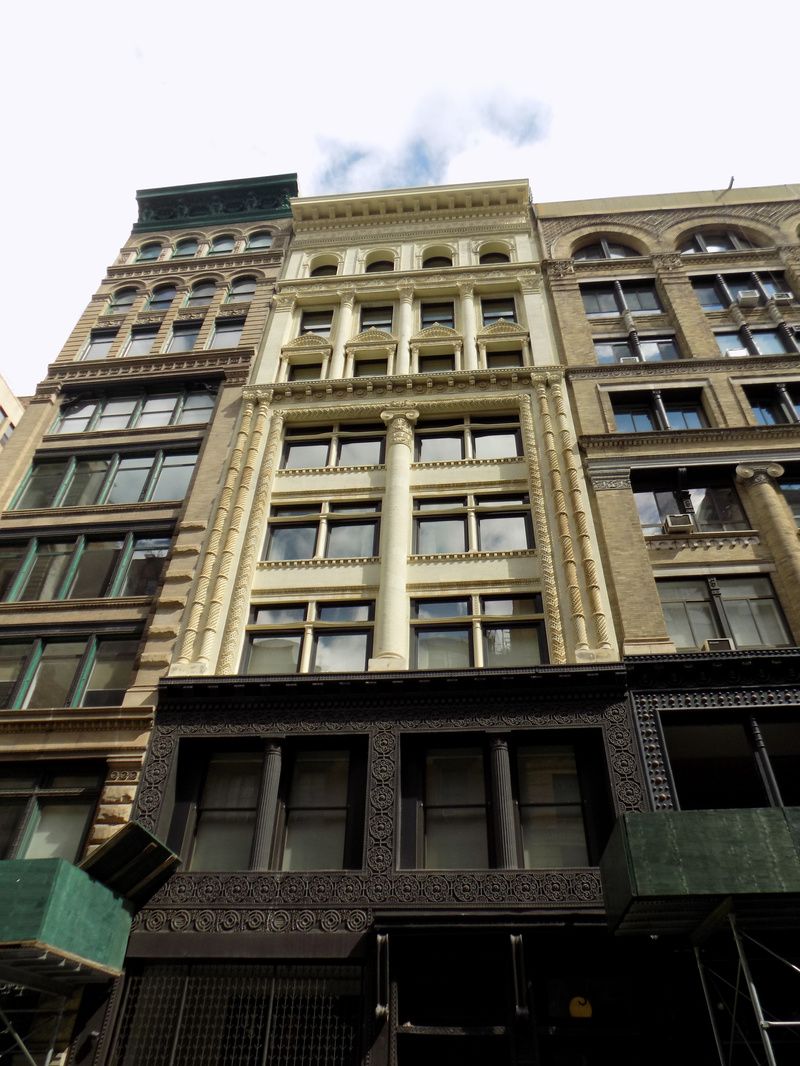
The highly detailed facade of the 8-story loft building at 37 East 12th Street is embellished with brick, terra cotta, and iron ornamentation. The iron on the first two stories features a swirly circular pattern. Above the iron part of the facade, the windows are topped with arched pediments and framed with finely carved terra cotta.
The building was designed by Cleverdon and Putzel in 1896. Though it was converted to apartments in 2016, the building was once filled with garment manufacturers. Thankfully, the ornate facade was kept intact throughout the interior conversion!
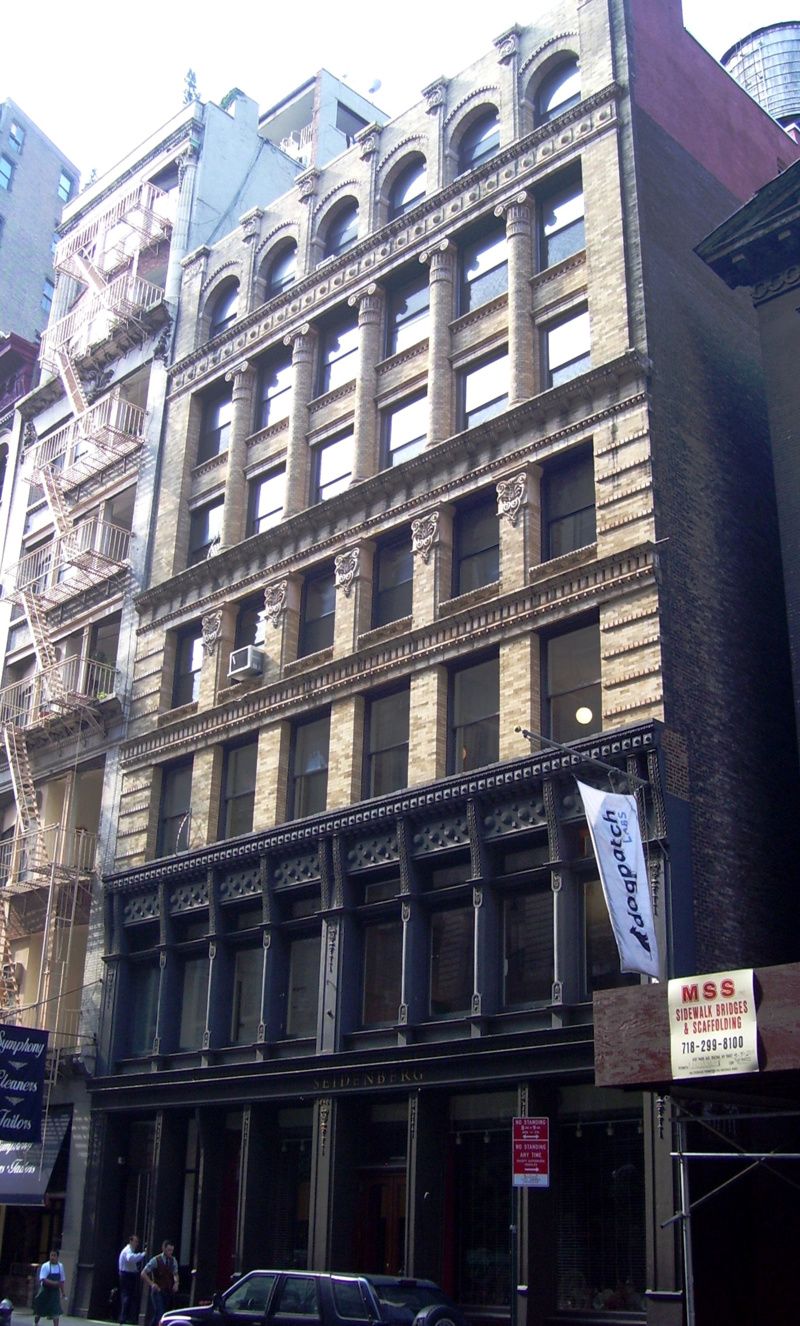
36 East 12th Street is another building that features both cast iron and brick on its facade and was also designed by Cleverdon & Putzel. True to the style of other Cleverdoon & Putzel buildings, this 1894 building boasts ornate decorative flourishes. The cast iron stories are embellished with dainty floral designs and dentil molding, while the multi-shade beige brickwork is enhanced by leaf-like terra cotta ornaments.
The ground floor of this building has been occupied by the family-owned business Seidenberg Antiques since 1940. The seven-story structure was originally built for German real estate developer and tire manufacturer Philip Braender. Another of Braender’s real estate development projects in the city, a 1903 apartment building at 102nd Street and Central Park West, bears his name. It’s called The Braender.
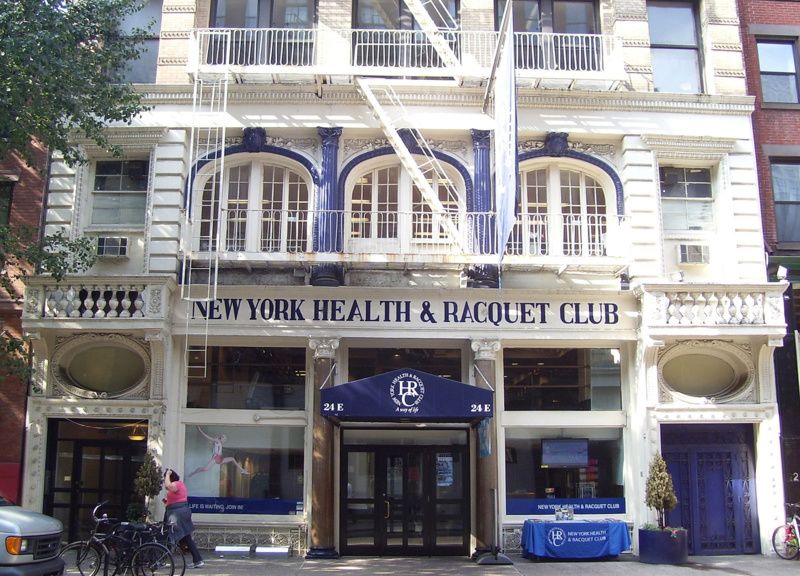
Photographic materials company G. Gennert was the first tenant of this 7-story storefront on East 13th Street. De Lemos & Cordes, German-born architects who designed the Siegel-Cooper Building and Macy’s Herald Square, designed this Beaux Arts Belle Époque beauty. It was completed in 1893.
In addition to the G.Gennert Company, the area South of Union Square has many ties to the photography business. Village Preservation found that the nearby 60-62 East 11th Street, was home to The Photographic Times, and important early photography magazine that claimed to be the “highest circulating photographic magazine in the United States” in 1880.

The twin lofts at 827-831 Broadway were built in 1866. They were designed by Griffith Thomas for tobacco heir Pierre Lorillard III. The Italianate and neo-Grec facade features both marble and cast iron elements. In 2017, the building was designated an individual New York City landmark, not just for its architectural merit, but also for its cultural significance. Artists Willem and Elaine de Kooning and Paul Jenkins lived in and had art studios at 827-831 Broadway. The landmarks designation saved the building from demolition.
On January 18th, join Village Preservation Executive Director Andrew Berman for a fascinating virtual tour of the hidden history south of Union Square. In this live virtual talk is free for Untapped New York Insiders,
Continue to explore the historic structures south of Union Square on Village Preservation’s interactive maps. Find out how you can help support the campaign by visiting Village Preservation’s website, where you can learn more about the threats that face the neighborhood, why these buildings matter, and how you can reach out to local officials.
Next, check out The Distinctive Cast Iron Architecture of SoHo
Subscribe to our newsletter